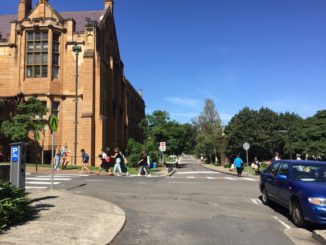
Story Theme and Angle
My story will focus on the wage exploitation faced by Australian international students in part-time jobs. The problem is widespread among international students in all regions of Australia, including major cities such as Melbourne and Sydney. I, myself included, am experiencing this unfair exploitation. According to “INTERNATIONAL STUDENTS AND WAGE THEFT,” published in 2019, 77% of international students working part-time earn less than the minimum hourly wage for temporary workers, Thirty-two percent of bachelor’s degree students earn half or less of the hourly wage of a minimum temporary worker ($12 an hour or less). Today, based on my own experience and observations of friends around me, wage exploitation doesn’t seem to be significantly better than it was in 2019. In part-time job opportunities for international students, most employers have been very tacit to set the salary at $18 per hour, which is lower than the law. In some areas with a high concentration of international students, such as Zetland and Mascot, employers are even giving rates of $12-14 an hour.

Although they are treated unfairly, it seems that most international students choose to accept this situation and do not actively fight for their rights and interests. Therefore, in my news, I will objectively present the current situation of international students working part-time in the form of interviews, and understand why they know they are being treated illegally but choose to endure it.
Meanwhile, in the news, I will also introduce the possible ways to protect their rights and interests in the face of wage exploitation, and help victims understand the channels of rights protection.
Select type
The article will be presented in the form of feature story, because the main purpose of my news is to make more people understand and pay attention to the social problem that international students are suffering from wage exploitation. The feature story can more objectively restore the truth and specific details of this event to readers.
Selected publications and target user groups
This story is aimed at anyone living in Australia, but mainly at international students and people who are keen to learn more about social issues. I plan to choose The Conversation as the target publication for this feature story because most of the articles from The Conversation are based on academic research and expert opinions, providing readers with deeper and more comprehensive information to help them better understand complex social issues and phenomena. At The same time, The Conversation is a digital born media platform whose main content and articles are provided in web format, in line with the publishing direction of online feature stories.
Sources of information
The information sources of the article mainly come from two directions, one is from actual interviews, the other is from online materials, such as government reports or survey data from third-party organizations.
Multimedia, hypertext and interactivity ideas
Multimedia will be mainly in the form of pictures, such as unfair job postings, working conditions, etc. At the same time, more hypertext will be used in the content of the article, extending the content to the content that is closely related to the topic, such as government regulations, legal documents, representations of cases, so that readers can quickly understand the comprehensive information. For example, international student readers who are experiencing wage exploitation but do not realize that it is illegal, or who do not know how to defend their rights and interests, may find solutions through this article.




I really like your choice of topic because as an international student, I have also encountered unfair treatment by employers, and it is common in Australia for international students to be treated unfairly in terms of pay. You say that the article will be represented by a feature story, which I think is reasonable, because a feature story can go more in-depth by interviewing specific people to get to the issues that need to be understood. For example, if your topic is to learn more about the unfair treatment of international students in part-time jobs, you can interview international students who are working in part-time jobs and let them tell you the actual situation to give you more relevant information. I’m looking forward to your final work!
I am very interested in your selection of this story as I am one of the international students myself and am also looking for part-time work. Your picture was relevant but I think it could be better if the pixels are in a high resolution. Your content could raise the attention of many international students and can provide more useful information to them; the story is newsworthy. However, I still have some questions. For example, you mentioned that your interviewees are ‘actual interviewees’. who are they? If you interview various groups of the stakeholder-such as international students, Labour Party workers, employers, etc – I believe the story would be more informative.